There are lots of things that can either be frustrating or scary about flying. There’s the lost/delayed luggage, take-off delays, lines at security, turbulence, lack of space, and of course… snakes on planes (at least in Hollywood). However, there’s one pretty serious consequence: blood clots from flying.
I’m pretty familiar with all of these annoyances (except for flying with snakes!) because I spend a lot of time in the sky. Unfortunately, on a trip to India one time, this annoyance was added to my list. Let’s not speak lightly of it, though. It is not just an annoyance, it’s a life-threatening situation caused by flying.
Deep Vein Thrombosis (DVT) and Pulmonary Embolisms (PE), can sadly be a byproduct of a long-haul flight. After 12 years of circling the globe as a travel blogger, I finally encountered it.
Even though there’s nothing fun about these things, flying is still worth it to me. Having the opportunity to move around this globe and explore is priceless. Vacations are important to your health and well-being – and for me, they are important for my work and my happiness.
Table of Contents
What are Deep Vein Thrombosis (DVT) and Pulmonary Embolism (PE)
Deep Vein Thrombosis is the most serious health risk you’ve never heard of. Deep vein thrombosis is a blood clot that forms in a deep vein, usually in a leg.
The clots can break off and lodge in your lungs (called a Pulmonary embolism), and can be fatal. The clot that is trapped in the lung leads to blockage of blood flow and can be extremely dangerous if not treated appropriately.
Blood clots from flying is a frequent reason for DVT, but it’s not just flying; any time you aren’t moving around enough, you have the risk of contracting clots.
How I Ended up in Urgent Care and Diagnosed with Blood Clots From Flying
“I think you should go to Urgent Care and have a CT Scan, “ the doctor on the phone urged me.
At first, I was taken aback as it seemed like an overreaction to what I believed to be a virus or cold that I caught while in India. I had called my doctor’s office to get an appointment before the weekend because I had an annoying cough that I couldn’t get rid of. Plus, my chest really hurt underneath my right breast when I took in big breaths or simply laid down. I thought I could get in to see a doctor and get some antibiotics for whatever infection I might have. Simple.
But now, the ER doctor they transferred me to was telling me to go to urgent care. She was worried that I might have blood clots from flying.
“I have an event tonight I’m going to, can I just go tomorrow instead?” I asked, annoyed that I was going to have to Uber to the suburbs to see a doctor.
“You could,” she said slowly, “but I think you should go tonight. It won’t take long. I just looked up the wait lines at the Urgent Care and you should get in right away.”
“Okay, I guess I can go quickly,” I responded reluctantly, still wondering if this was really necessary.
Because I’m cheap and didn’t think this was any big deal beyond a nasty cold, I decided to take an Uber Express Pool. I don’t have a car in Denver, which is normally not an issue as I never go out to the suburbs and I bike or walk most of the time. This Uber was going to be expensive and I wanted to save some money. The express pool is the cheapest way to Uber. They don’t even let you off at your destination, but near it, and then you occasionally have to walk a few blocks.
As the Uber driver dropped me off about 4 blocks from the Urgent Care in Aurora, my final words to him were, “If I die walking to Urgent Care it’s in your hands.” We all laughed and I started walking.
The pain in my chest and my cough seemed to be getting worse by the minute. I began to find it hard to breathe without pain. Before I knew it I had an EKG, blood tests, and an IV in my arm, and suddenly they were taking me in for my first-ever CT scan.
The doctor came back and told me they found 3 blood clots (pulmonary emboli) in my lungs. Then proceeded to tell me how lucky I was.
I was lucky because up to a third of pulmonary embolisms will ultimately be fatal; a sudden death situation.
Still in disbelief, I sat there letting this all sink in.
I knew I was lucky, but I don’t think the severity of it had sunk in yet. My sister also had contracted blood clots from flying which nearly killed her a few years ago from a long-haul flight. I knew from her experience that this was going to mean a long time on blood thinners and careful monitoring.
So of course my first question to the doctor was “Can I still travel?”
“Yes, you can still travel,” she replied. I felt a moment of relief. Then she launched into the prescriptions I would need to start, including one that required me to give myself a shot in the belly. My relief quickly vanished.
But, I reminded myself, at least I was still alive…and I could still travel.
Signs of DVT and PE After Flying
Once I knew the diagnosis, I started to go back over the last two weeks in India. Things that I thought were odd at the time, suddenly started to make sense. It was like connecting the dots in a murder mystery!
Symptoms of Deep Vein Thrombosis and Pulmonary Embolism
Symptoms of DVT can include (usually the leg or arm):
• Swelling of your leg or arm
• Pain or tenderness that you can’t explain
• Skin that is warm to the touch
• Redness of the skin
Symptoms of a PE can include:
• Difficulty breathing
• Faster than normal or irregular heartbeat
• Chest pain or discomfort, which usually worsens with a deep breath or coughing
• Anxiety
• Lightheadedness, or fainting
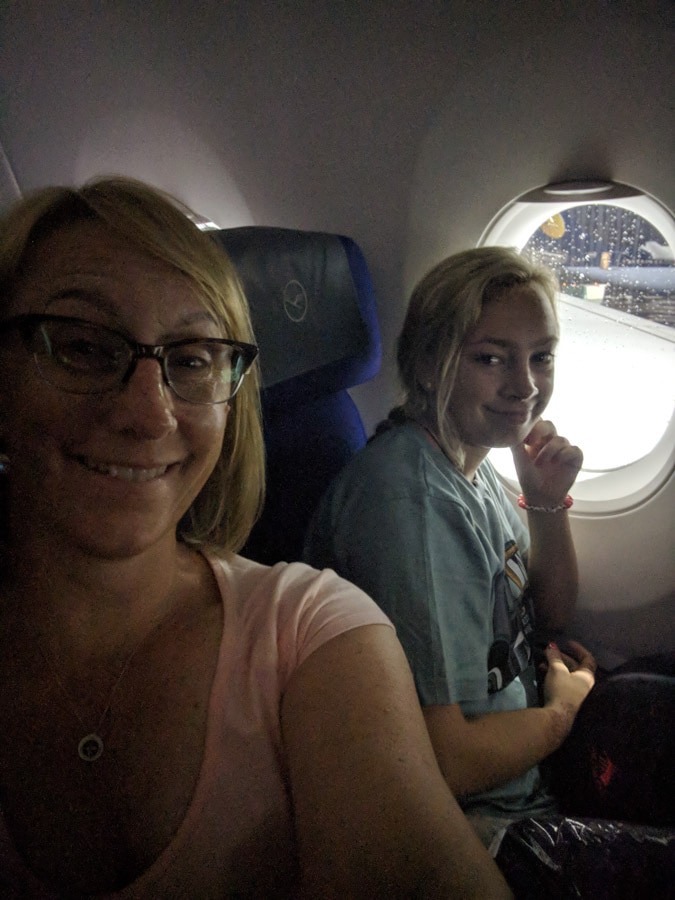
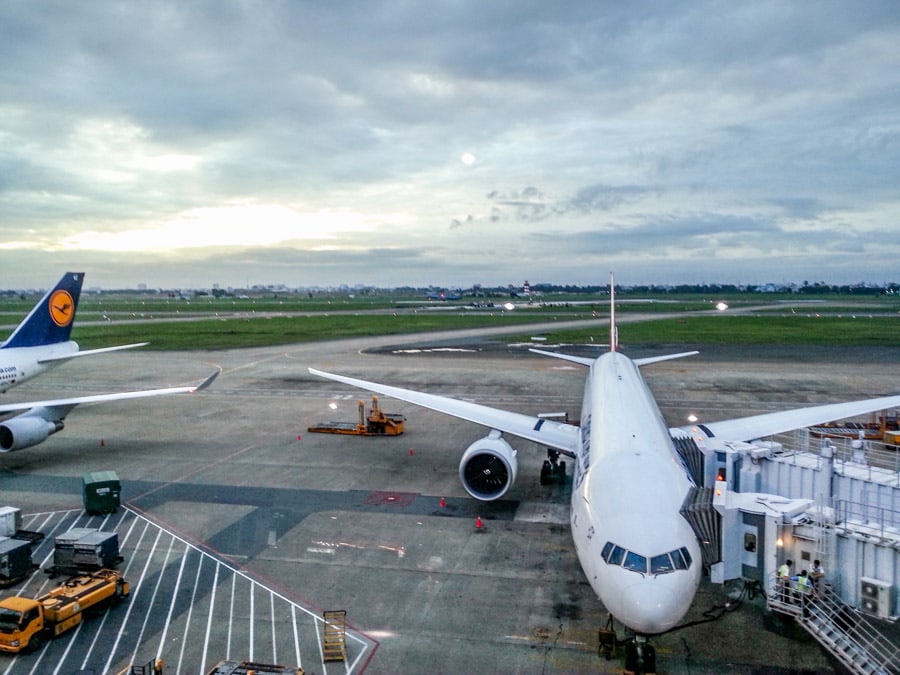
How I Contracted Blood Clots From Flying to India
My flight to India was an overnight 14-hour flight from Newark to Delhi. On long flights, I always get the aisle seat so I can easily get up and down and walk around without bothering the person next to me. However, since this was my niece’s first big trip out of the country, I decided to let her have the window seat which then put me in the middle seat.
Feeling a bit trapped (and not wanting to be a bother to the person next to me), I didn’t get up and walk around as much as I normally do. Plus, since it was an overnight flight, I did actually sleep for a good 5 solid hours. This lack of movement for a prolonged time is likely what made the blood clots form on the flight. In addition, I take estrogen which also increases my susceptibility to blood clots.
My blood clots likely formed in my legs from my initial long haul flight to India.
DVT normally starts with pain in your legs, that’s a sign of clots deep in your veins. I had a strange ache in my left calf while in India. However, I rationalized it because it was so incredibly hot and humid in India that I just thought any weird body reaction had to do with the intense heat.
I tried to massage my calves but in general, it was just a nagging ache that I lived with and didn’t really think too much about.
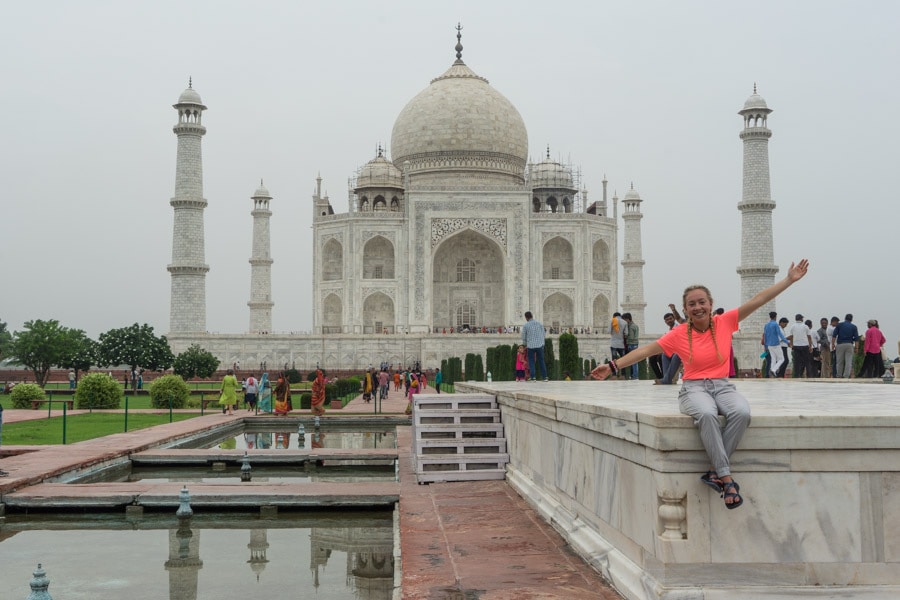
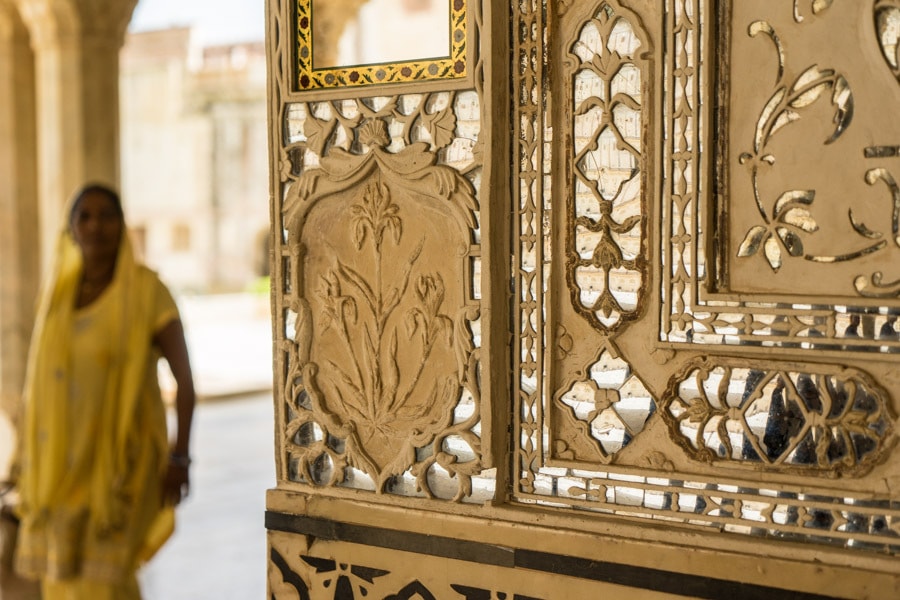
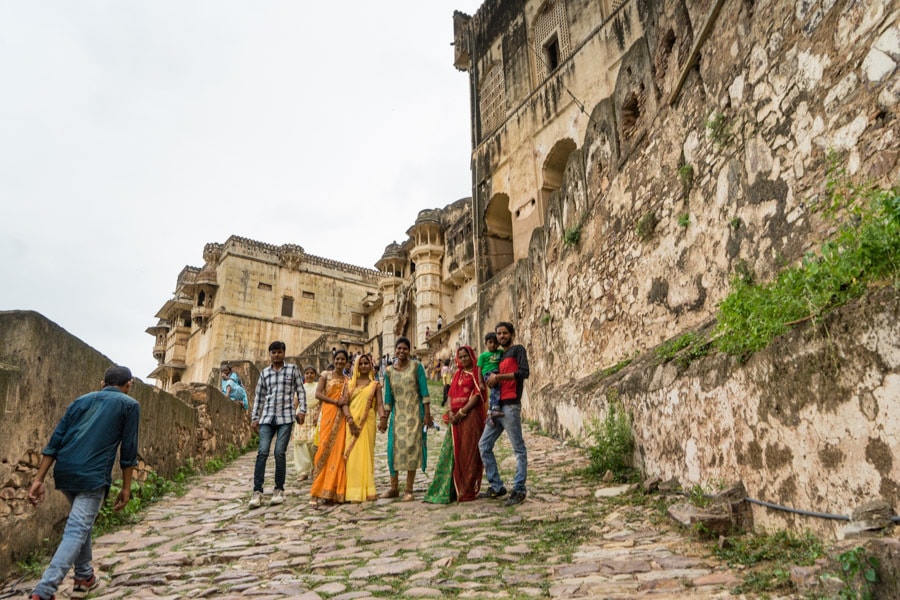
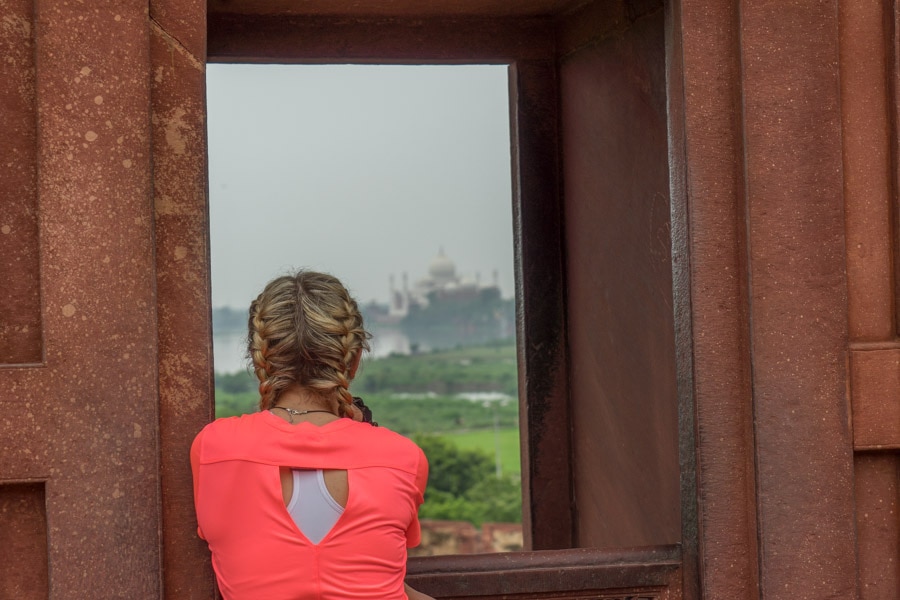

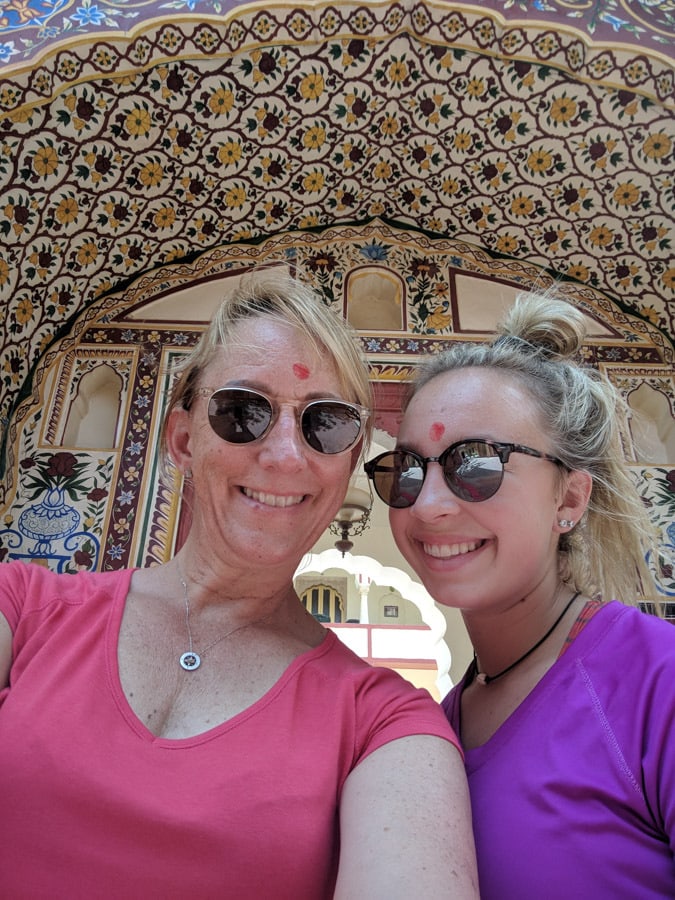
After a week in India with more long bus rides and train rides where I didn’t think too much about mobility and getting up frequently, I noticed a weird pain in the right part of my chest underneath my breast. I was laughing about something that had happened and when I took in a deep breath I had a pain in my chest.
Once again, this was a nagging pain that would come and go (mainly when laughing and breathing deeply), but I just thought that it had to do with jetlag, the heat, or India’s pollution.
At one point I did wonder if I had bruised a rib, but figured that if I did there was really nothing I could do.
At the end of the trip, I started to develop a cough that I thought was a cold.
The blood clots moved into my lungs while I was in India
After the long flight home to Denver, the cough became more frequent, I was feeling lightheaded, and the pain in my chest was becoming worse.
However, I still thought it was just a cold or maybe irritation from the pollution in India that may have turned into bronchitis.
Little did I know that all of these symptoms that I had been disregarding were actually really serious.
Treatment for Pulmonary Embolism and Blood Clots from Flying
Since my pulmonary emboli are believed to be provoked by a long-distance flight, my treatment is pretty simple – blood thinners.
First, they started me off with a drug called Lovenox; I had to give myself shots in the belly for 5 days. Then, they switched me over to Pradaxin, a new blood thinner medication that I took twice a day. There are no extensive drug tests necessary like the older drugs, and I had to be on Pradaxin for about 3 to 6 months.
Once diagnosed, the treatments for blood clots from flying are actually pretty simple.
How You Can Prevent DVT on Long Flights
Before you panic and think that you’ll never fly internationally again, know that blood clots from flying are actually pretty easy to prevent.
If I hadn’t been so lax about getting up and moving on that initial flight, this never would have happened.
Yes, I was at an increased risk due to the estrogen I was taking, but I’ve been on a ton of long flights while on estrogen medication and had never had an issue before.
This could have been prevented if I had just gotten up and walked every 2 hours!
Here’s all you have to do to prevent blood clots on your next long-haul flight or train ride:
Take a low dose of aspirin
Take low-dose aspirin starting 2 days before your flight and throughout your vacation until you are home. Aspirin thins the blood which prevents clots.
Get up and move or do foot exercises every 2 hours
Set an alarm if you have to! Move your legs frequently when on long trips and exercise your calf muscles to improve the flow of blood. Walk around the cabin every once in a while.
Extend your legs straight out and flex your ankles (pulling your toes toward you). Some airlines suggest pulling each knee up toward the chest and holding it there with your hands on your lower leg for 15 seconds and repeat up to 10 times.
These types of activities help to improve the flow of blood in your legs.
Stay hydrated
Stay well hydrated, but with water. Dehydration causes blood vessels to narrow and blood to thicken, raising the risk of blood clots. Staying well-hydrated improves circulation.
Avoid alcohol and caffeinated tea, coffee, and soda, which all act like mild diuretics. These types of drinks would add to your risk for dehydration.
Wear compression socks
Most doctors will recommend compression socks for long flights. The pressure these stockings put on your legs helps your blood vessels work better and helps prevent DVT.
Before you go ‘Ewwww’,
Stockings with higher numbers have a higher level of
Compression Socks I Recommend
I have a few gear brands I love for travel and luckily they also make
Vim & Vigr Fashion Compression Socks (Get 15% off when you use discount code is OTT15 expires 12/31/20)
Sockwell Women’s Chevron Graduated Compression Socks
Point6 Compression Socks
Ironically – World Thrombosis Day is October 13th – the exact date of my next long-haul flight after this experience
I think my biggest surprise about this whole thing is that after I told people about what happened to me, I learned of so many other friends and followers who have had similar diagnoses. And I even learned of a few friends who had stories of fatal results.
This is more common than I ever knew.
Everyone always thinks, “It won’t happen to me” – but it can.
I will always love travel, and I will get on many more long-haul flights because it is so important to me to see and experience the world. However, I will be much more mindful about how I handle long flights and will be much quicker to act on the signs. I hope now you will too.
Read about 3 ways to minimize travel disasters
Another Good Reason to Have Travel Insurance
This is just another instance that proves the importance of having travel insurance.
Since my clots formed on my flight to India, there was a good chance that I could have been fatally ill while in India. I’m pretty lucky that I somehow avoided that scenario.
However, if I hadn’t, at least I had travel insurance from Allianz that would have taken care of me while in India.
Disclosure:
This post contains some affiliate links. If you choose to purchase items through these links, I will earn a small commission at no extra cost to you. These commissions help reduce the costs of running this site

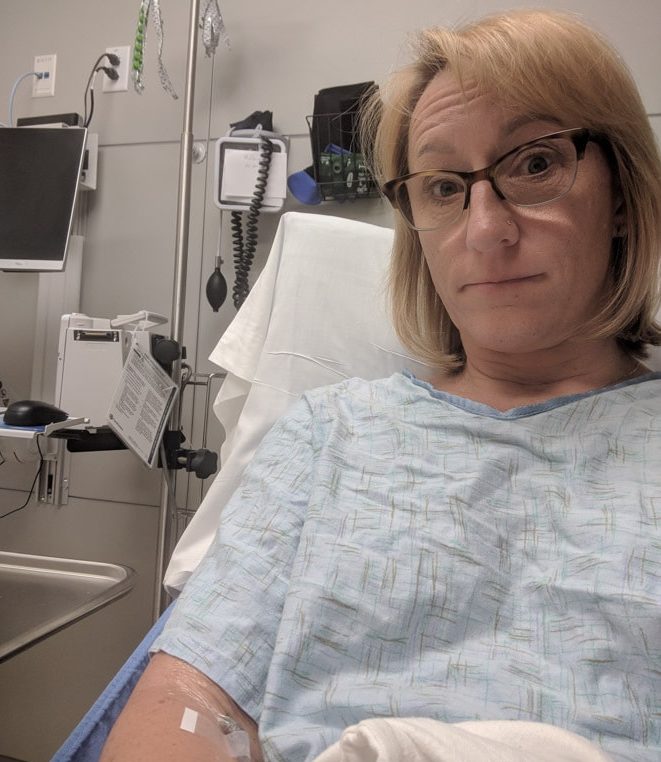
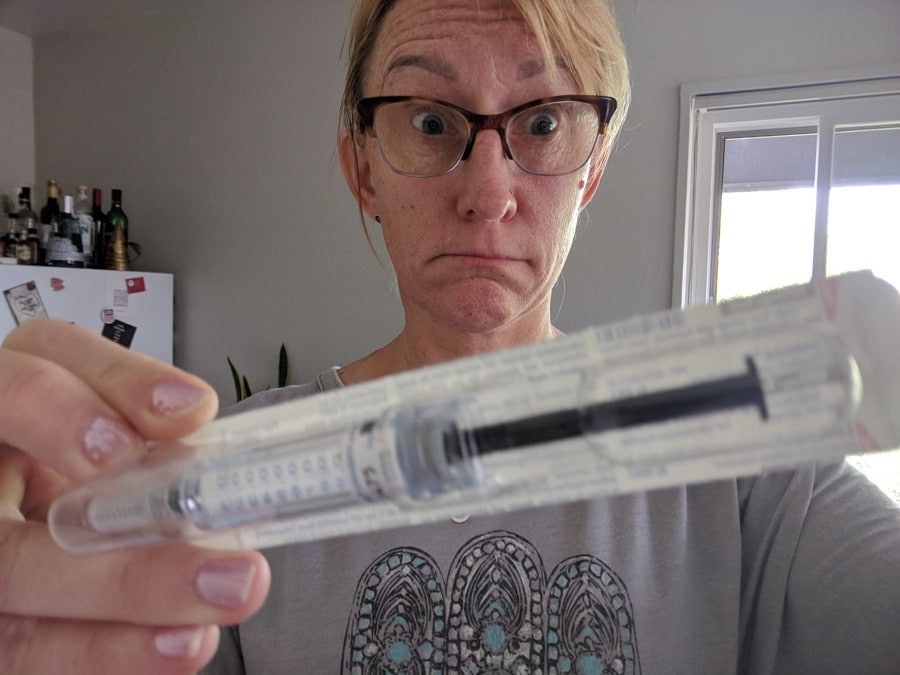



By Katie August 28, 2018 - 10:43 am
My friend’s Dad died on a flight from this so you are definitely lucky!
By Sherry August 28, 2018 - 1:02 pm
I’m so sorry to hear that. Yes – I think it has finally sunk in how lucky I was. I’ve had so many people contact me about fatal stories of dvt and pulmonary embolisms – it’s terrifying. But it can be avoided…education is key!
By Kristina August 28, 2018 - 11:37 am
How scary for you! Glad you are on the mend. I’m curious, did your doctor make you stop taking the estrogen?
By Sherry August 28, 2018 - 1:01 pm
Yes and no. I haven’t been able to meet with my primary care physician yet (doing that this week), and until I meet with her it was suggested that I stop the estrogen. I have a feeling she’ll say it’s ok to go back on it though. The blood specialist seemed to think that it was ok for me to still be on it even though I fly a lot. I think the main thing is that you are getting up and walking every two hours!
By Linda Fritz August 28, 2018 - 11:38 am
Thank you for this very informative post. I will be using your suggestions on my future long-haul flights!
By Lari August 28, 2018 - 12:03 pm
Hi Sherry: It was very good of you to share your personal medical history as part of your column. Chances are pretty good that by doing so you will have saved lives. My wife would be just the type to shrug off the symptoms just as you did, and we have an international flight coming up shortly. I’ll share this column with her.
By Sherry August 28, 2018 - 1:04 pm
Definitely share it with your wife!! It’s easy to avoid and think about getting some compression socks too! But the key is getting up and walking every 2 hours!
By Alison Jackson August 28, 2018 - 12:34 pm
Thanks for sharing this very important story. Glad you’re on the mend. I’ve been wearing compression socks on flights over 3 hours for a number of years. I’ve finally gotten my 80 year old parents to wear them now on long haul drives too. My Mom was recently gifted a pair that zip up. Easier than trying to roll them up! Let’s make these socks “super-cool essential accessories” and watch the fashion industry respond.
By Sherry August 28, 2018 - 1:05 pm
I love the way you think…let’s make them a fashion statement!! I love the idea of zip up ones…
By Vicki August 28, 2018 - 1:14 pm
Wow…such good information but unfortunate you had to experience it first hand. So glad you’re good to go…far & wide & across the world again!
By Merrilee August 28, 2018 - 4:28 pm
Thanks for sharing! I used support hose when pregnant and they helped me out with swelling and energy. I’ll also do a quick check with the family on symptoms as we had a recent long flight.
By Taylor August 28, 2018 - 5:46 pm
I was diagnosed with five last fall (two in one lung, three in the other). I got the same sharp pain you describe, although mine was on my left side on the side of my rib cage. I could barely breathe while lying on my back. A little shortness of breath, but I have mild asthma so that didn’t tip me off. It was the sharp pain that did.
I was on xarelto 20mg for 6mo and am now on a 10mg dose daily. Doc said it could be DVT, but I fly a lot so he thinks it may be related to the autoimmune drug I take for psoriasis.
Glad you’re okay, and everyone, please at least move your ankles and legs a little if you can’t get up on flights.
By Sherry August 29, 2018 - 12:32 am
Glad you are ok too!!!
By Vanessa Mayer August 28, 2018 - 6:01 pm
Thanks for the informative article; I will bookmark it for future use. I’ve been taking low dose aspirin every day with my vitamins – will your doc recommend this for you, as well?
By Sherry August 29, 2018 - 12:32 am
Right now I’m still on the blood thinner Pradaxin until whenever he says stop. Once I’m through that prescription I hope I don’t have to take anything more. But a low dose aspirin is an easy preventative that I can do for flights.
By Jean Farrell August 28, 2018 - 8:42 pm
Wow, that’s scary. I get up and walk around all the time when I fly which is why I always try to get an aisle seat. Nothing makes me more miserable than not being on the aisle. I’ll be extra careful to walk around even from the middle or aisle seat now. So glad your doctor made you go to urgent care.
By Sherry August 29, 2018 - 12:28 am
Yes – I owe my life probably to the doctor on the phone. Lucky for sure…
By B.L. Ochman August 28, 2018 - 10:08 pm
So sorry you went through this! It’s awful and so scary!
I’ve had DVTs and PEs and that’s because I have antiphospholipid antibody symdrome – and I bet you do too.
Normal people really don’t get blood clots from long flights. There almost always is an underlying cause. I hope you have been tested for APLS.
If you’ve had PEs, it’s likely that you actually need to stay on blood thinners for life.
Not meaning to scare you, but make sure you see a hematologist to see if you have this blood clotting disorder.
This is also called Hughes Syndrome, because Dr Hughes, in England, discovered it.
By Sherry August 29, 2018 - 12:26 am
Granted – I still have to do more tests, but my hematologist felt pretty positive that this was from the provoked by the long haul flight. I’m hoping he’s right. 🙂
By Jessica August 28, 2018 - 10:36 pm
So scary! You are right, I never think this will happen to me or my family so thank you for telling us your story. I’m very glad you are just fine and can share more awesome travel stories with us.
By Sherry August 29, 2018 - 12:25 am
Thanks! And make sure that family of your is moving around on your next long flight!
By rob August 28, 2018 - 11:51 pm
Lovely. Something else that can kill me. I’m actually surprised that this gets such low-grade attention given the numbers that die from it.
I don’t take estrogen, and as of a few months ago long flights are going to be very rare for me in the next few years. But I do think of all the 14-hour flights I’ve done in the last 6 years with a little bit of horror. Admittedly I do always take an aisle (or bulkhead window) seat. And I drink a lot of water so I’m up peeing every hour or so. And somewhat absentmindedly do leg exercises while hanging out in my seat reading. I’ve been lucky so far.
Good idea with the aspirin as a short-term prophylactic. I never thought of that, although I have done a bit of research on the benefits of a daily 80mg dose of aspirin. Lots of potential positives, but a few possible negatives. Aspirin is one of those drugs that’s quite individual in its effects.
Anyway … An expensive, no doubt, disturbance in your life. But at least you didn’t become a statistic. If you want to look on the bright side, think how much better this outcome was than dying in India and leaving your niece to deal with picking up the pieces (albeit with help) and getting herself and her new extra-large piece of luggage home!
By Sherry August 29, 2018 - 12:23 am
Yes – it was a bit expensive and unplanned…but worth it to catch it of course. And YES…so so lucky nothing happened in India…still hard for me to comprehend!
By Tom Bartel August 29, 2018 - 4:06 pm
Thanks for the timely reminders, Sherry. And it goes without saying that we are very glad you are alright.
By Tom Bartel August 29, 2018 - 6:43 pm
And, btw. Next time take an Uber all the way to the ER door. I’ll paypal you the extra $5.
By Sherry August 30, 2018 - 10:46 pm
Ha! I honestly didn’t think it was serious! Yes – I promise I won’t uber pool next time!!
By Leigh August 29, 2018 - 9:33 pm
Thank you for sharing your story and these tips – how scary! I lost a friend two years ago to PE – we had lost touch and only recently reconnected on FB, so I don’t know if it was flying related, but it hit me hard as it was the first person my age to die of something other than a car accident. I had no idea about estrogen, and will definitely take the tip on adding aspirin to my pre-flight regimen!
By Sherry August 30, 2018 - 10:47 pm
I’m so sorry to hear about your friend. It’s amazing to me how many stories like this I’ve heard this last week – and yet no one really knows about it. Yes…take those aspirin!
By Juan Ovalle September 4, 2018 - 2:25 am
This is incredibly scary and I’m glad you’re okay! Thank you for the tips
By David Bennett September 9, 2018 - 6:36 pm
I’m glad you are OK.
It’s really useful that you have turned this around to describe in detail what happened to you and how to prevent it.
It’s a public service, really it is.
I am trying to mentally peer into a pair of lungs to imagine what happens, but I cannot picture the size of the clots. That said, I don’t have a very good mental picture of the interior of the lungs.
Grisly question, but did you get to find out how big those clots were?
What dose is low-dose aspirin? I am guessing that ‘low dose’ is 75mg or something like that?
My wife and I started wearing compression socks about a year ago when we took a fairly short flight (London – St Petersburg), and we’ve continued even for short flights such as the one we just took to Austria.
About self injecting. You must have seen those war movies where the U.S. soldier sticks a morphine syringe into a wounded soldier’s leg, right though the clothing. I wonder what those syringes are like – seems like they are an instant delivery system, no need to press a plunger.
And a stewardess cautioned me against tomato juice on a flight because it has a high salt concentration and has a diuretic effect. Years later and I think of that when I see the trolley coming down the aisle.
By Lara Callachan September 26, 2018 - 7:13 pm
My daughter was diagnosed with clots on the lungs 3 months ago from a long haul flight from New Zealand to the UK. Really scary for us back here and hard for her all by herself in London. Great information in your article, thanks for writing it.
By Sherry October 6, 2018 - 1:13 pm
I hope she’s doing better now. I think I was so lucky that nothing horrible happened while I was in India as medical help would have been a challenge – especially for my niece!
By Amy @ GoWithLess September 26, 2018 - 10:13 pm
Wow, Sherry. That’s some pretty scary stuff. Thank you for sharing your story. I’ll need to get compression socks ASAP.
By Janet September 30, 2018 - 2:41 pm
Thank you for sharing this. My husband had a DVT this winter after a moderate length flight (5 hours). But he is overweight and sleeps the whole time on a flight. It took us about 6 weeks to finally admit what the pain in his calf was. We are both medical professionals and should have known better. Now done with his Xaralto regimen he feels fine but I really want him to get compression socks. I will for sure make him read your post and he will be getting those socks in his Christmas stocking this year!
I am very glad that you are better and no real long term effects from the PEs. Those are really serious business.
By Sherry October 6, 2018 - 1:12 pm
A great idea for a Christmas stocking!!! Glad he caught it in time too!
By Greg November 19, 2018 - 6:06 pm
Hi, Thanks for your article.
During the summer my wife had a PE from a blood clot after our long haul flight from the UK to Dominican Republic. I am now terrified something may happen next time we go on holiday and is making me not want to go anymore. She has been told she will need injections every time she fly’s, I am looking at short haul maybe next time but still terrified of it happening again. I used to love planning holidays and its now spoilt it due to my worries. I feel really sad and worried about it.
By Sherry November 20, 2018 - 12:35 am
Greg – I’m so sorry to hear about your wife’s PE. It’s a very scary situation – I totally understand. I was diagnosed in August and have been taking Pradaxa blood thinners ever since. However I had no restrictions from flying and in fact have been on at least 8 flights since then. I do wear my compression socks for all the travel and I get up a lot now! But I didn’t have to take any special shots or drugs besides the normal Pradaxa. I do hope you start planning holidays again!
By Loti February 9, 2019 - 8:04 pm
Hi Sherry – I had a dvt and several PE’s in the left and right lung in October. I am in Xarelto everyday. How long was it before you took an overseas trip of 10 hours or longer? Lori
By Sherry February 9, 2019 - 8:20 pm
Lori – I had no restrictions for flying on long trips. In fact I was back on a plane in 2 weeks on a short trip. My first long trip was probably 1 month after the initial diagnosis. But as I said I had no restrictions. However I was/still am on blood thinners for 6 months. I also wear compression socks now and set my alarm for every 90 minutes to get up and walk. Were you told that you can’t do long flights any longer?
By Diann March 12, 2019 - 12:29 am
Interesting to read your story – glad you received excellent care. I had my saddle PE after a long haul flight to South Africa and was hospitalized overseas. Thankfully they have good healthcare there as they saved my life in Cape Town. That was in September, almost off the blood thinner now and feeling substantially better. Here’s my story if you’re interested: http://www.voyagerstale.com/africa/getting-sick-abroad-that-time-i-almost-died-in-south-africa/
By C Miller May 27, 2019 - 5:16 pm
Sherry
Great story, A cautionary tale for others. I shall be 86 in two months, Never smoked, no diabetes, normal BP,
160 pounds at 70 “, lifetime runner (some marathons in my 40s), take no meds, and only hospitalization was
overnight, 60 years ago in 1958. In a word, great shape. But there are black swans lurking in the shadows.
May 9th, 2019 at 0300 was awakened by serious stabbing pain under left rib cage and near the kidney.
Thought it is was kidney stone, nearly decided to wait a while before going to ER, Another stab and I was
on the way to the ER. Good news: no kidney stone.
Bad news, multiple emboli in both lungs and DVT in right groin. Next 36 hours in bed hooked up to Heparin
drip. Released with heavy Elquis for 11 days (10mg/twice a day and now on 5 mg twice a day with follow up
Dr visits scheduled. Once pain subsided had none of normal symptoms. Was told, it was a close run incident
that could have been fatal if I waited any longer.
Cause of DVT believed to be result of two days of long drives from FL to NJ with too few stops
and no walking around at those. “Just pee and go” as the Dr said.
Although most DVTs and PEs seem the result of iong flights, sitting for long periods under any circumstances can
prove deadly as well.
Waiting for clearance to take long planned trip to Holy Land in July. One Dr advised me to go to the
Wailing Wall, put a prayer in the Wall and thank God for my miracle.
Final advice, keep moving and don’t ignore unusual pain, especially if one plans to fly or take a long drive.
By Sherry May 28, 2019 - 9:20 am
Thanks for sharing your story and advice! More people need to know about this! Glad you are ok!
By Ashley October 4, 2019 - 7:27 pm
I had a PE in my right lung during my c section with my first baby.
I had high blood pressure in pregnancy, and was on moderate bed rest. Now that I think about it I had a wicked Charlie horse in my calf a week before my delivery. They put me under for my c section and I lost oxygen twice, however they sent me home a week later with the clot still in my lung because they didn’t check. I had sharp pins and needle pain in my chest mostly under my breast bone and a sharp pain where my kidney was(which was where the clot was located) I went in and demanded test and sure enough it was a clot. I was on warfarin for 3 months And rivaroxaban for 3 months. I am now off and learning to manage my anxiety. Other symptoms included coughing up slight blood, and extreme night sweats. I get up like every hour now even at home on the couch. This forever changed my life and I’m glad to be alive but dealing with the anxiety that I could throw another one at any minute is getting old! How do you cope with the mental effects of a PE
By Sherry October 19, 2019 - 7:11 am
Since mine was caused from flying – I take precaution when flying now – like getting up every 2 hours to walk around, wearing compression socks and taking baby aspirin every day.
By Gillian Buckley November 5, 2019 - 5:01 pm
I too had PE, in 2010, I was diagnosed with COPD BY MY doctors , but I was going to fly to Australia to see my Daughter and Grandchildren , I asked my Doctor for some antibiotics to take with me because I was told I had COPD, but she refused so we got a flight to Australia I was so ill for the three weeks I was there I went to my Daughters doctor who gave me antibiotics and steroids , three lots while I was there,on my flight home I became extremely out of breath every time I moved when we landed at Heathrow I told my husband I needed a wheelchair, they fast tracked me out and took me to the our car, when I got home I started coughing up blood and we went to the hospital who gave me a cat scan and that’s when I found out I had multiple blood clots on both lungs they even thought I had two holes in my lungs because two of the clots were so large, that young Doctor saved my life, after a week in hospital, I had a COPD test done and was informed I didn’t have COPD, so I had flown to Australia and back with blood clots on both lungs , nobody can believe I hadn’t died on the first flight let alone survive the holiday and flight home , I’m on blood thinners for life now but at least I’m still alive ,
By lin kro August 1, 2020 - 8:31 pm
Your blog suggests 30-40 compression. Yet the links for the socks don’t have anything that high. Confused.
By Sherry August 2, 2020 - 1:05 am
Sorry for the confusion. The socks I recommend are from Vim & Vigr and they have two different levels of compression. Take a look on their site here – https://shareasale.com/r.cfm?b=1019858&u=1321933&m=72414&urllink=&afftrack=
You can also use my discount code OTT15 – It’s good for 15% off
I also list an Amazon pair but those don’t have different compression levels. HOpe that clears things up. Let me know if you have other questions.
By Kevin February 9, 2022 - 10:47 pm
Sherry-Thank you for posting your story! were you eve able to get off blood thinners? I got a DVT/PE after ankle surgery and now am a bit leary of flying. I am supposed to be flying to Hawaii in a few months but an anxious about the trip. I was on Eliquis for 6 months but have been off them since last summer. Do not want to get back on them! Glad I came across your story. There just isnt much out there about DVT recovery and travel. What was once such a source of joy for me (car or air travel) is now a stressor in my life. I don’t even like two hour car rides anymore.
By Sherry April 24, 2022 - 12:42 pm
Yes – I did get off the drugs after 6 months. Now I just take a small aspirin every day and have been fine!